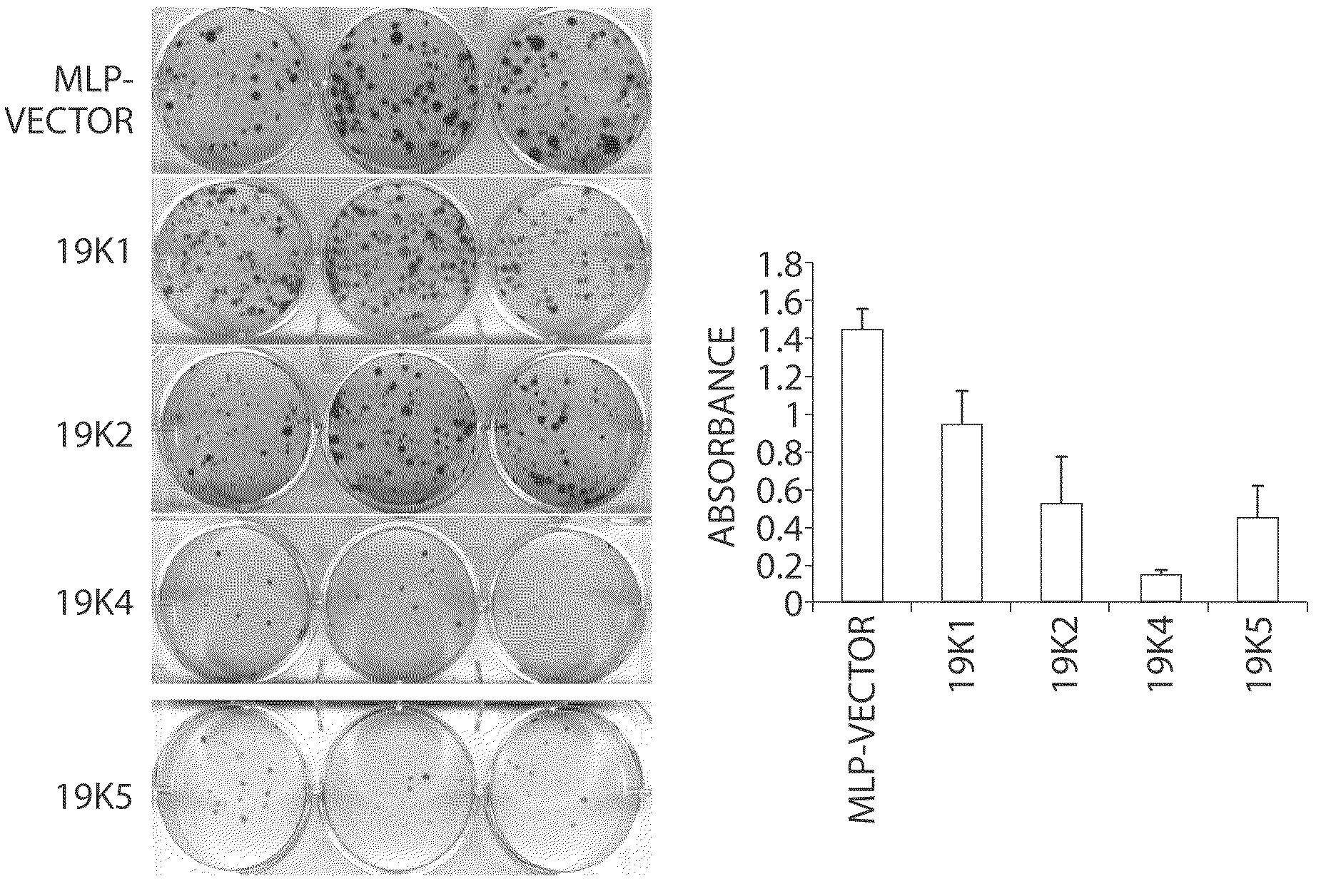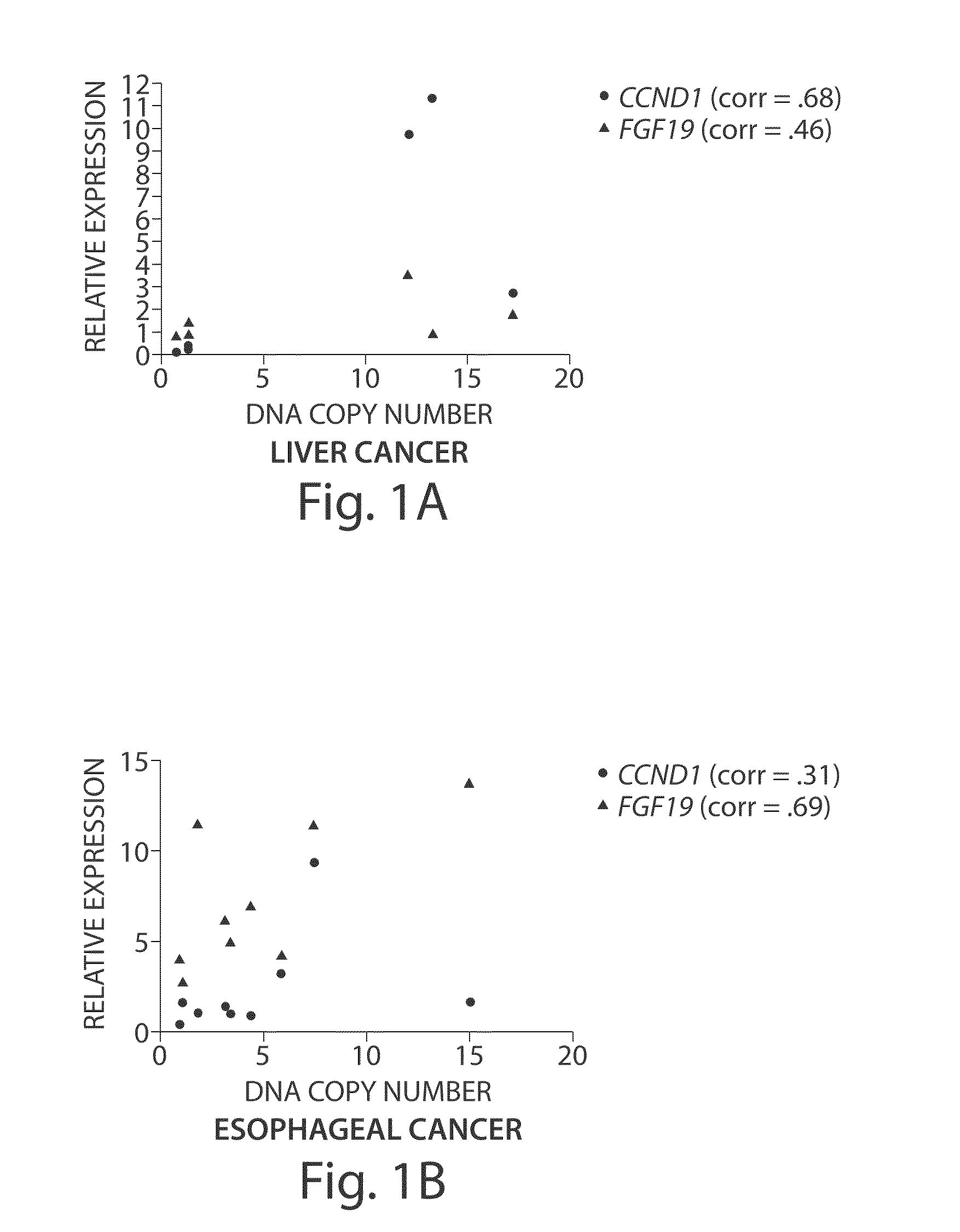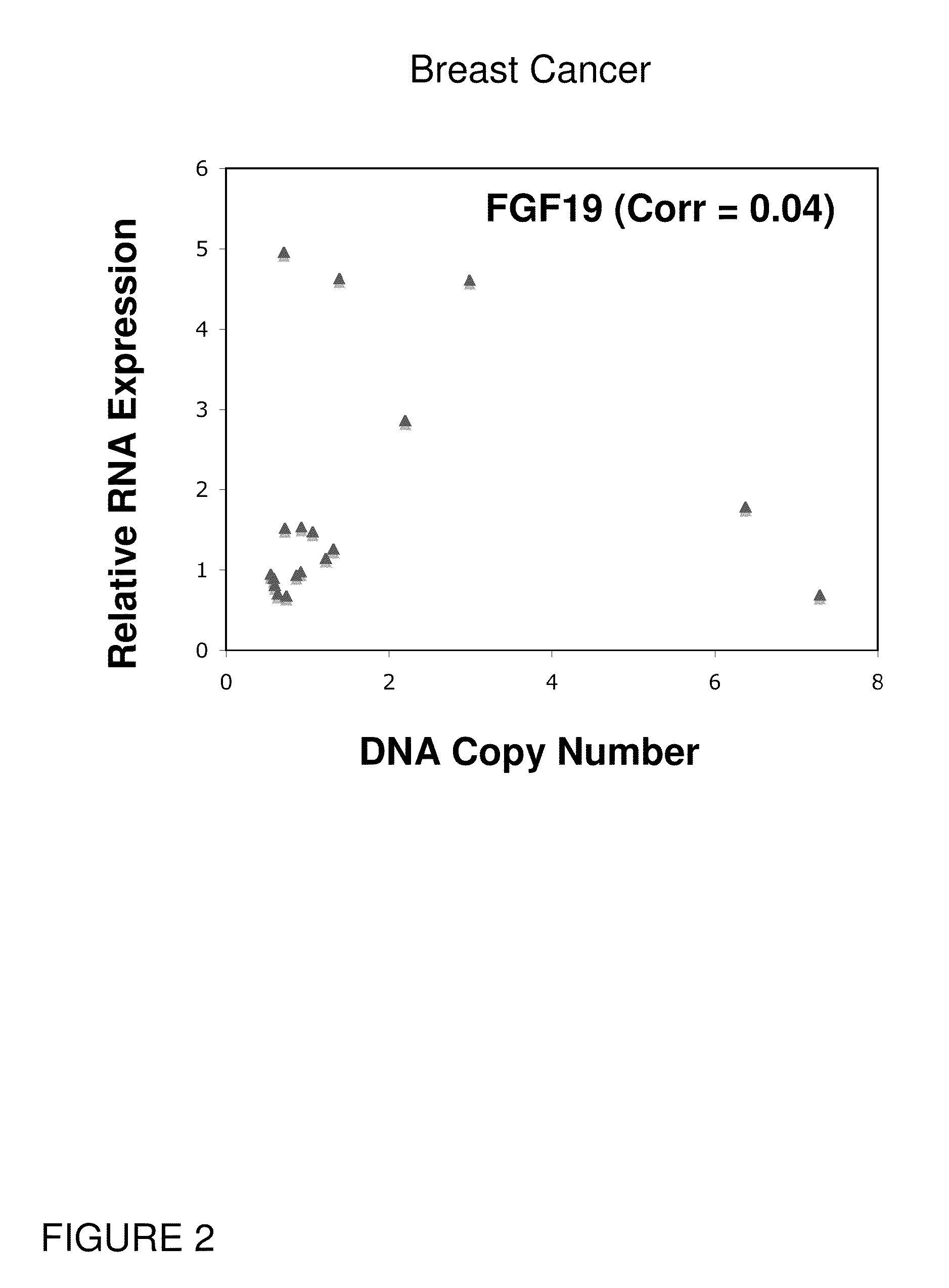Role of fgf-19 in cancer diagnosis and treatment
a cancer diagnosis and treatment technology, applied in the field of cancer therapy, can solve the problems of difficult discovery, poor prognosis, and inability to respond to current treatments
- Summary
- Abstract
- Description
- Claims
- Application Information
AI Technical Summary
Benefits of technology
Problems solved by technology
Method used
Image
Examples
example 1
Identification of FGF19 as a Driver Gene for the 11q13 Amplicon in Liver and Esophageal Cancers
[0180]The 11q13 amplicon containing the cyclin D1 gene is one of the most if not the most frequently amplified region in many types of cancers—up to 50% of oral carcinomas and 25% of esophageal tumors (Jiang, W., S. M. Kahn, et al. (1992). “Amplification and expression of the human cyclin D gene in esophageal cancer.”Cancer Res 52(10): 2980-3; Huang, X., T. E. Godfrey, et al. (2006). “Comprehensive genome and transcriptome analysis of the 11q13 amplicon in human oral cancer and synteny to the 7F5 amplicon in murine oral carcinoma.”Genes Chromosomes Cancer 45(11): 1058-69), 15% in both breast and liver cancer and from 5% to 30% in lung cancer Zhang, Y. J., W. Jiang, et al. (1993). “Amplification and over-expression of cyclin D1 in human hepatocellular carcinoma.”Biochem Biophys Res Commun 196(2): 1010-6; Ormandy, C. J., E. A. Musgrove, et al. (2003). “Cyclin D1, EMS1 and 11q13 amplification...
example 2
FGF19 RNA Over-Expression in Liver and Esophageal Cancer
[0182]This prompted us to test by independent methods the correlation of DNA amplification and RNA expression in liver cancer (FIG. 1a) as well as esophageal cancer (FIG. 1b), a tissue which shares a common lineage with liver hepatocytes. Real time PCR (TaqMan) was used to determine whether FGF19 was over-expressed as a result of DNA amplification in these two tumor types. In both tumor types, both CCND1 and FGF19 are over-expressed as a result of DNA amplification (Liver tumors: CCND1 (corr=0.68); FGF19 (corr=0.46); Esophageal tumors: CCND1 (corr=0.31); FGF19 (corr=0.69)).
[0183]Using whole genome array analysis of both RNA expression and DNA copy number FGF19 was found not to be over-expressed as a result of DNA amplification in breast, lung, and melanoma cancers, but was over-expressed as a result of DNA amplification in liver cancer. (Table 1; See also FIG. 2 showing real time PCR (TaqMan) analysis indicating that FGF19 is o...
example 3
[0185]
TABLE 2Properties of the Panel of Six HumanHepatocellular Carcinoma Cell LinesInhibitionaCGMDetection ofof ColonyLiver CancerFGF19SegmentedFgf19FormationCell LineAmplicationValueProteinby RNAIHuh 7+1.90++Li7+4.03++Hep3B+2.58++HepG2−0.96+−SNU182−0.99−−SNU423−1.02−−
[0186]A panel of six human hepatocellular carcinoma cell lines was examined. The cells lines were chosen to equally represent human liver tumors with amplified FGF19 and CCND1 genes and non-amplified tumors. Relative DNA-copy number at the FGF19-CCND1 locus was determined by array CGH analysis using ROMA [1]. As shown in Table 2, the cell lines Huh7, Li7, and Hep3B all contain increased copy number of the FGF19 gene, whereas HepG2, SNU182, and SNU423 contain normal diploid levels. The level of Fgf19 protein also was measured in these various cell lines by immunoblotting with a commercially available antibody (R & D Biosystems) [FIG. 3]. As summarized in Table 1, Fgf19 protein could be detected in all three of the ampl...
PUM
| Property | Measurement | Unit |
|---|---|---|
| temperature | aaaaa | aaaaa |
| temperature | aaaaa | aaaaa |
| temperature | aaaaa | aaaaa |
Abstract
Description
Claims
Application Information
 Login to View More
Login to View More - R&D
- Intellectual Property
- Life Sciences
- Materials
- Tech Scout
- Unparalleled Data Quality
- Higher Quality Content
- 60% Fewer Hallucinations
Browse by: Latest US Patents, China's latest patents, Technical Efficacy Thesaurus, Application Domain, Technology Topic, Popular Technical Reports.
© 2025 PatSnap. All rights reserved.Legal|Privacy policy|Modern Slavery Act Transparency Statement|Sitemap|About US| Contact US: help@patsnap.com



